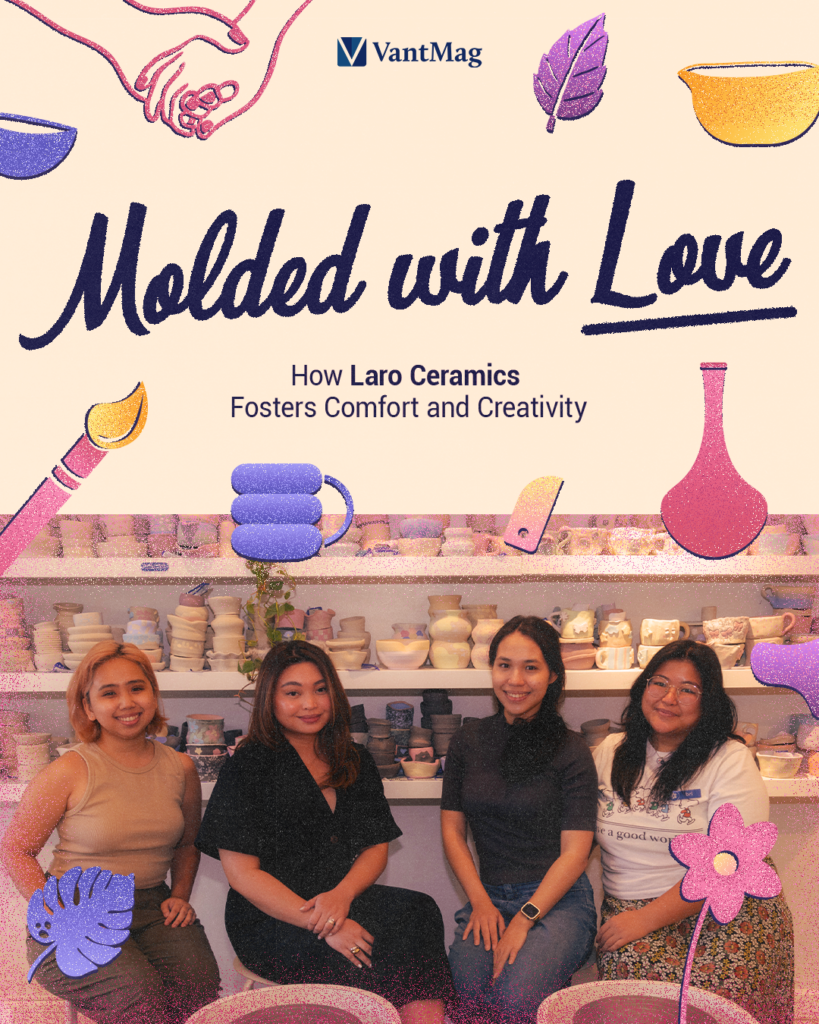Coming-of-age is a Vantage column where staffers share their opinions on a specific beat. From in-depth analyses of TV series to miscellaneous musings in music (and everything in between), this monthly column is an avenue to spread and inspire thought-provoking ideas.
In this column, Vantage Magazine staffer Therese narrates her encounters with making art. Amidst all her failed attempts, she’s learned one thing: One should definitely throw caution to the wind when creating any type of art.
All my life, I believed that making art was not meant for me. It took me several practical arts classes throughout elementary and high school for me to realize this. I always seemed to screw up my art projects, whether it be turning in sloppy work or uncreative designs. Classmates who received high marks followed the teacher’s instructions to a tee, or displayed advanced craftsmanship in their works. Either way, I was neither of those students.
Because of this, I instilled in my brain that art was only meant for the people who could produce perfect works on a regular basis. Our art classes demanded outstanding outputs almost every month. As a student who had more priorities to focus on other than just paintings and woodwork, I found that request difficult. Yet, there were a few students who could always deliver top-notch requirements on time. For that, they were always (and only) the ones whom the teacher praised for their artistic ability.
It turns out that three months of idle living during a lockdown can do wonders for one’s perspective on art.
Of course, trying to make art again didn’t come easy. During the first time that I attempted to paint, I had to put down my brush in frustration. Just five minutes into painting, I realized that I painted my canvas the wrong shade of green. After my failed painting, I turned to other forms of art. Digital doodling, polymer clay charm making, traditional scrapbooking—you name it, I had probably attempted to do it. However, every draft seemed to end up a disaster. I always felt that my work wasn’t good enough; it wasn’t art that I would post on social media. In other words, my works weren’t “aesthetic” enough in my eyes. I kept my art materials hidden away as it collected dust in one corner of my room.
A few more months passed, and I came running back to art as an escape. Scrolling endlessly through social media took a toll on my mental health. I looked for excuses to put my phone down, and so I started doing all kinds of art again. In this time around, I paid no mind if the linework was messy, if the clay was misshapen, or if the ephemera was poorly pasted.
It was at that moment when I realized that one should, first and foremost, make art for themselves. Art doesn’t exist for the sole purpose of pleasing other eyes. If it makes you feel good, then there’s no reason to fuss over the small mistakes made in your work. Imperfections, after all, make a masterpiece unquestionably unique.
Yes, I make art—and I am bad at it. But that doesn’t mean I’ll stop creating. After all, art is a continuous journey of trying, failing, and learning.






